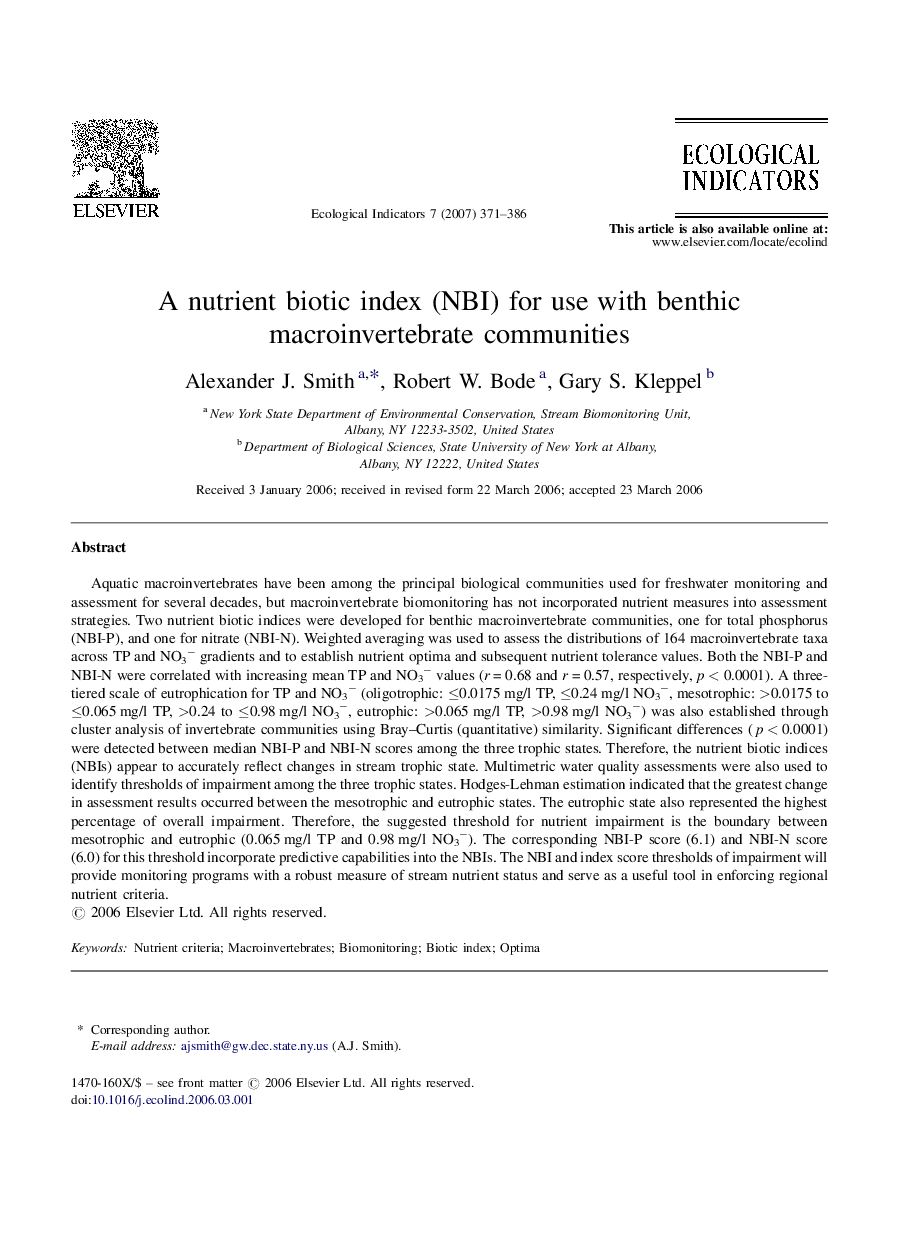| Article ID | Journal | Published Year | Pages | File Type |
|---|---|---|---|---|
| 4374494 | Ecological Indicators | 2007 | 16 Pages |
Aquatic macroinvertebrates have been among the principal biological communities used for freshwater monitoring and assessment for several decades, but macroinvertebrate biomonitoring has not incorporated nutrient measures into assessment strategies. Two nutrient biotic indices were developed for benthic macroinvertebrate communities, one for total phosphorus (NBI-P), and one for nitrate (NBI-N). Weighted averaging was used to assess the distributions of 164 macroinvertebrate taxa across TP and NO3− gradients and to establish nutrient optima and subsequent nutrient tolerance values. Both the NBI-P and NBI-N were correlated with increasing mean TP and NO3− values (r = 0.68 and r = 0.57, respectively, p < 0.0001). A three-tiered scale of eutrophication for TP and NO3− (oligotrophic: ≤0.0175 mg/l TP, ≤0.24 mg/l NO3−, mesotrophic: >0.0175 to ≤0.065 mg/l TP, >0.24 to ≤0.98 mg/l NO3−, eutrophic: >0.065 mg/l TP, >0.98 mg/l NO3−) was also established through cluster analysis of invertebrate communities using Bray–Curtis (quantitative) similarity. Significant differences (p < 0.0001) were detected between median NBI-P and NBI-N scores among the three trophic states. Therefore, the nutrient biotic indices (NBIs) appear to accurately reflect changes in stream trophic state. Multimetric water quality assessments were also used to identify thresholds of impairment among the three trophic states. Hodges-Lehman estimation indicated that the greatest change in assessment results occurred between the mesotrophic and eutrophic states. The eutrophic state also represented the highest percentage of overall impairment. Therefore, the suggested threshold for nutrient impairment is the boundary between mesotrophic and eutrophic (0.065 mg/l TP and 0.98 mg/l NO3−). The corresponding NBI-P score (6.1) and NBI-N score (6.0) for this threshold incorporate predictive capabilities into the NBIs. The NBI and index score thresholds of impairment will provide monitoring programs with a robust measure of stream nutrient status and serve as a useful tool in enforcing regional nutrient criteria.
